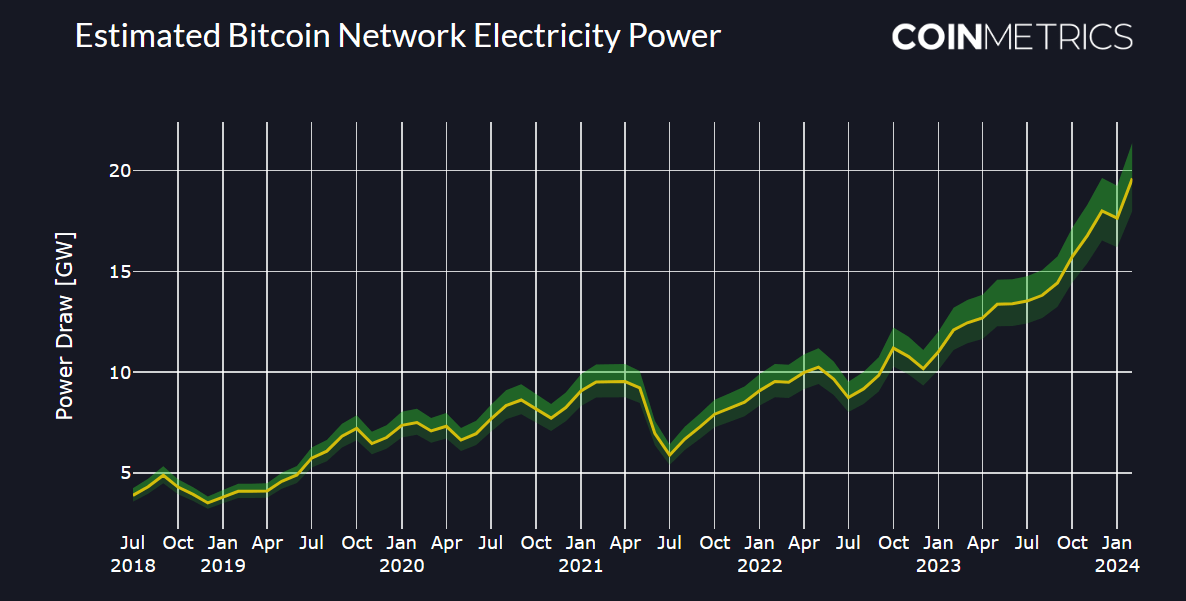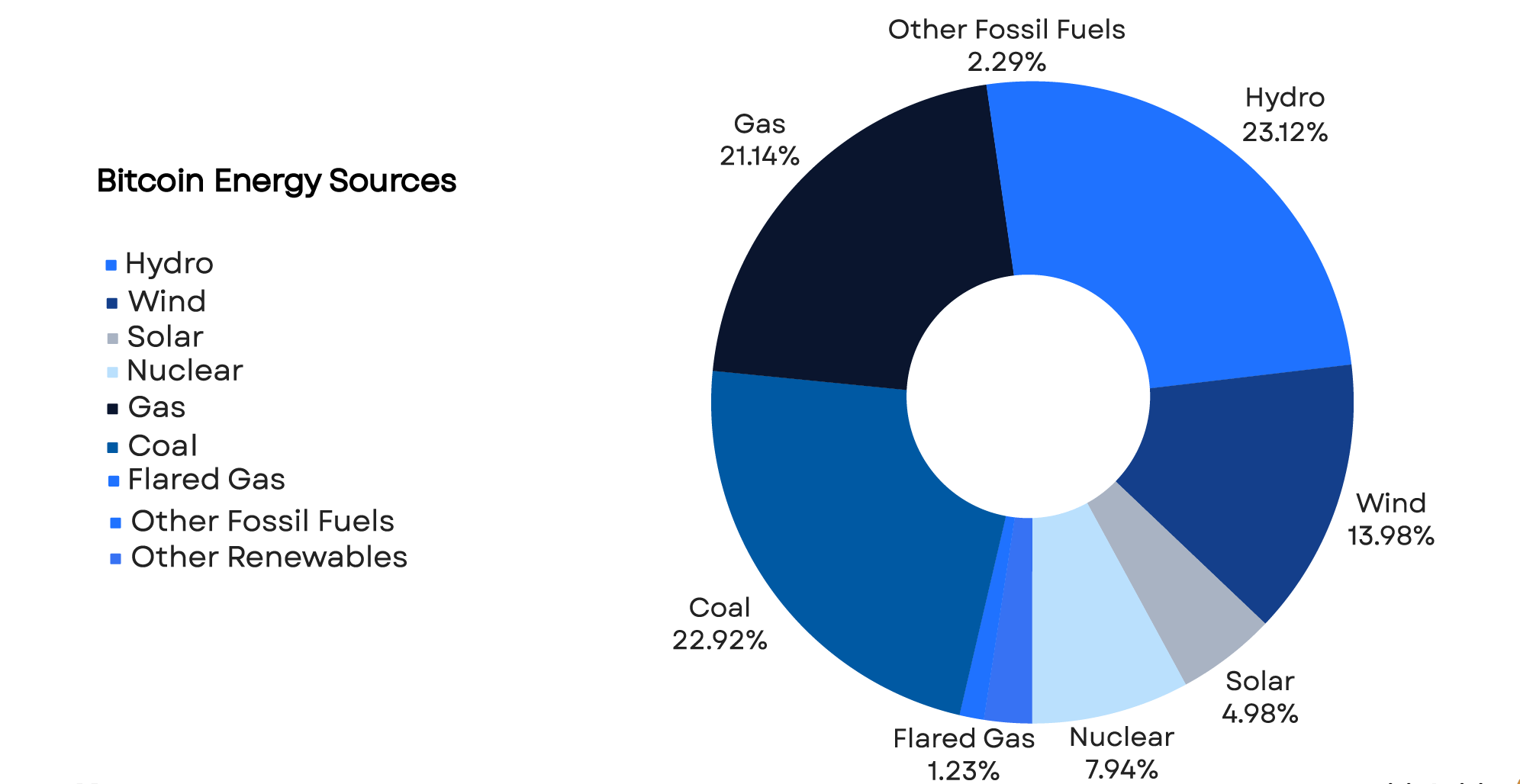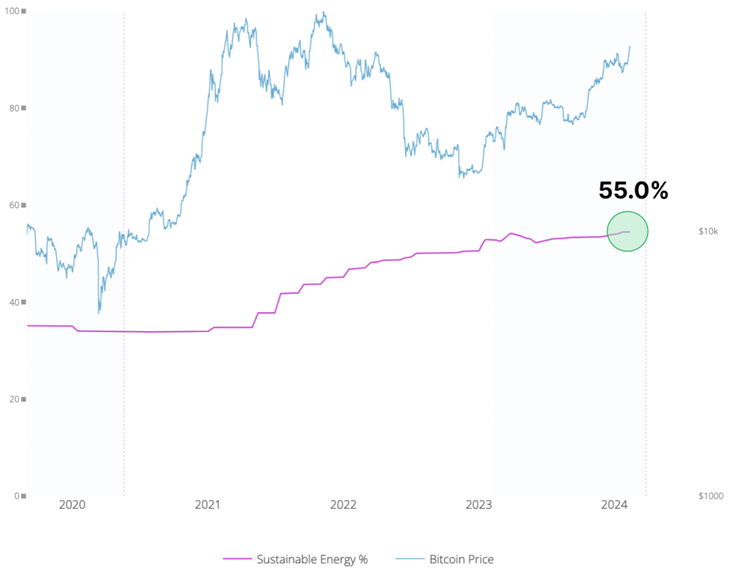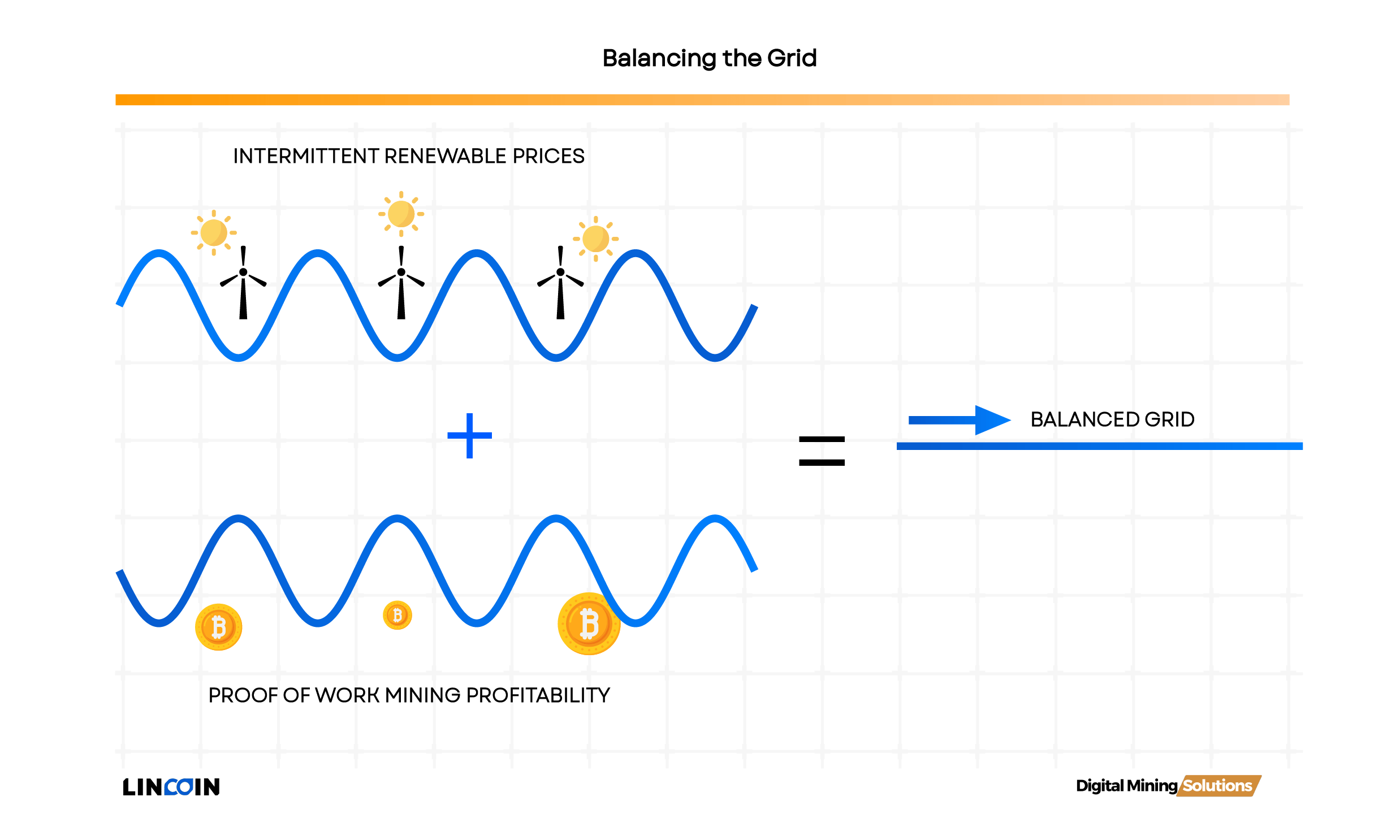Stay up to date with the latest news, announcements, and articles.
- What is the Bitcoin Network Total Power Usage?
- What Does the Power Source Matrix of Bitcoin Miners Look Like?
- What Are Green Energy Sources in Bitcoin mining?
- Sustainable Energy Usage by Bitcoin Miners
- Why Bitcoin Miners Should Consider Choosing Renewable Energy?
- The Positive Environmental Impact of Bitcoin Mining
- Incentive for Renewable Energy Projects
- Balancing the Grid
- Consume Stranded and Wasted Energy
- Monetizing Vented and Flare Gas while Reducing Emissions

Bitcoin mining is an energy-intensive industry, with over 80% of operational costs consisting of electricity bills. Choosing the right energy source that matches your situation is crucial. The usage of Bitcoin green energy mining and wasted energy has increased significantly over the last few years, leading to a shift away from the narrative that Bitcoin mining is bad for the environment.
In addition to using more sustainable power, the characteristics of Bitcoin mining can actually solve many problems faced by the energy sector. Miners can act as the consumer of last resort for stranded and wasted energy, balance the grid, and enable power generators to operate at higher capacities. These solutions are particularly relevant for renewable energy producers and grid operators.
Let’s delve into the power usage of Bitcoin mining, discover how crypto mining renewable energy operations can have a positive impact, and zoom into why Bitcoin miners should consider choosing sustainable energy.
What is the Bitcoin Network Total Power Usage?
According to the live tracker of the Bitcoin network’s power demand by the Cambridge Bitcoin Electricity Consumption Index (CBECI), the Bitcoin network consumed an estimated 20.45 GW in March 2024. The model by CoinMetrics showed a total of 19.6 GW at the end of January 2024. Over the course of two years the estimated electricity power used by the Bitcoin network doubled.

What Does the Power Source Matrix of Bitcoin Miners Look Like?
In March 2023, Daniel Batten published a power source matrix on Batcoinz.com. The chart shows that 52.4% of miners use some form of Bitcoin mining green energy. Hydro is currently the energy source used by most miners (23.12%), followed by coal (22.92%) and gas (21.14%). Wind is in fourth place and the second biggest renewable energy source.

What Are Green Energy Sources in Bitcoin mining?
Green energy sources, often used interchangeably with renewable energy Bitcoin mining sources, are those that are naturally replenished and have minimal impact on the environment. Some common examples include:
- Solar energy: Generated from sunlight using photovoltaic cells or solar panels.
- Wind energy: Produced by harnessing the kinetic energy of wind using wind turbines.
- Hydropower: Generated from the energy of moving water, typically by damming rivers or utilizing tidal movements.
- Biomass energy: Derived from organic materials such as plants, agricultural and forestry residues, and organic waste.
- Geothermal energy: Harvested from heat stored beneath the Earth’s surface, often through the use of geothermal power plants.
The classification of nuclear power as a form of renewable energy is an ongoing subject of debate. While nuclear power plants do not emit greenhouse gases during operation, the fuel used in nuclear reactors (such as uranium) is finite and not naturally replenished on human timescales.
At EZ Blockchain we take pride in working with green energy sources, including wind, solar, hydro, nuclear and utilize wasted gas. Over 65% of our electricity is emission free.

Sustainable Energy Usage by Bitcoin Miners
In early 2024, data was released showing that 55% of Bitcoin mining is using sustainable energy. Bitcoin mining employs more sustainable energy than various other sub-sectors, such as the banking sector, gold industry, iron & steel industry, and agriculture. The industry has also achieved the highest increase in sustainable energy mix (+38%) during the period from July 2019 to June 2023, compared to other global industries

Why Bitcoin Miners Should Consider Choosing Renewable Energy?
There are several motives why Bitcoin mining renewable energy should be used, so here are 5 important reasons:
- Environmental Impact: Bitcoin mining has drawn criticism for its significant energy consumption. Utilizing renewable energy sources such as solar, wind, or hydroelectric power can significantly reduce the carbon footprint and environmental impact of mining operations. This aligns with broader efforts to combat climate change and promote sustainability.
- Long-Term Viability: Fossil fuels are finite resources, and their prices are subject to fluctuations influenced by geopolitical factors and market dynamics. In contrast, renewable energy sources are abundant and offer more stable long-term pricing. By investing in renewable energy infrastructure, miners can secure a more predictable and sustainable energy supply, reducing their vulnerability to energy price volatility.
- Cost Efficiency: Bitcoin mining with renewable energy sources often has lower ongoing operational costs compared to fossil fuels, particularly as technology advances and economies of scale are achieved. Renewable energy is especially more cost-effective in regions with favorable renewable energy resources.
- Regulatory Compliance and Social Responsibility: Governments and regulatory bodies are increasingly imposing stricter regulations on carbon emissions and incentivizing the adoption of renewable energy. By choosing renewable energy sources, Bitcoin miners can demonstrate their commitment to environmental sustainability and social responsibility, which may help in navigating regulatory frameworks and gaining community acceptance.
- Public Perception and Reputation: The environmental impact of Bitcoin mining has become a topic of public concern and scrutiny. Miners who operate using Bitcoin green energy mining sources can improve their public image and reputation by showcasing their commitment to sustainability. This can be particularly important for attracting investors, customers, and partners who prioritize ethical and environmentally conscious business practices.
As the world transitions towards a more sustainable energy future, integrating renewable energy into Bitcoin mining operations can position miners for long-term success while minimizing their ecological footprint.
The Positive Environmental Impact of Bitcoin Mining
For many years, the majority of media outlets portrayed Bitcoin mining as an evil industry because of its high energy consumption. However, the fact that mining cryptocurrency using green energy is power-intensive is actually characteristics that allow it to have a positive impact that goes beyond just using sustainable power.
Incentive for Renewable Energy Projects
Wind and solar are intermittent sources of energy, as their supply depends on weather conditions. This randomness of generation causes unreliable frequency and voltage production. Additionally, demand for electricity fluctuates and does not always match supply. Bitcoin miners can address this issue by purchasing energy from wind and solar farms when energy is produced at times when there is not sufficient demand. By doing so, miners monetize renewable power that would otherwise be wasted or require expensive storage technology.
By making money from energy that would otherwise be lost, power companies can pay off their high initial investments faster. Green energy Bitcoin mining can also play a role in funding the development of projects. Miners can be connected the moment windmills or solar panels start generating power. The Bitcoin earned or electricity sold to miners can partly pay for the deployment of the transmission or distribution system. The income generated from mining can also be used to fund the expansion of wind or solar farms, or power companies can use the funds to invest in energy storage solutions.

Balancing the Grid
Power generated from fossil fuels or nuclear is consistent which makes it relatively easy to balance the grid. With an increased production of wind & solar, balancing becomes more challenging and unpredictable. One of the ways to keep the grid balanced while dealing with the intermittent supply is by absorbing power through demand response loads. Bitcoin mining as an interruptible load can provide a solution for this challenge. Mining facilities can be switched off without suffering the adverse impacts that other industrial consumers do (e.g. factories and smelters). Moreover, mining machines are a controllable load, meaning the miners can dial up and down their power consumption to the level the grid operator demands.

Consume Stranded and Wasted Energy
Bitcoin mining characteristics make it possible to go to locations where energy is stranded or wasted. Bitcoin mining operations are location agnostic, making it possible to mine in remote areas. Mining equipment is modular and can provide the load needed to a specific situation. transformers, containers and ASICs are mobile making it easy to unplug an operation to deploy it somewhere else. Mining has a high energy density which means little m2 is needed in comparison to other industries with high energy demand.
Monetizing Vented and Flare Gas while Reducing Emissions
According to the World Bank, each year about 150 billion cubic meters of natural gas is flared. This emits 400 million tons of CO2-equivalent emissions and other pollutants, including methane and black carbon (soot). In many cases capturing flare gas is not economically sustainable. Building pipelines to get gas to the consumers is a multi-million dollar investment. Generators cost money to acquire and maintain, so companies will likely not run gas through a generator unless it makes money. Bitcoin mining can make it economically sustainable to combust methane in generators. Monetizing flare gas is not the only reason why companies are engaging in Bitcoin mining. Next to an economic incentive, capturing flare gas also helps companies meet environmental standards. The process of combusting f lare gas in a generator reduces not only the emission of methane up to 98%, but also CO2 emissions by about 63% compared to continued flaring.

Miners reducing emissions is not only taking place in oilfields. There are also cases where miners tap on to wasted biogas produced by biodigesters, landfill gas recovery systems or wastewater treatment plants.
At EZ Blockchain we are specialized in reducing emission by capturing gas that otherwise would have been flared. This combined with facilities that have an energy matrix which largely consists of renewable power sources, makes EZ Blockchain a responsible mining company that care about the future.
Fill out a form and our bitcoin mining expert will contact you.
FREE CONSULTATIONchoose
a miner
profit and
understand data?
business remotely
with EZ Blockchain?
Fill out a form and our bitcoin mining expert will contact you.










